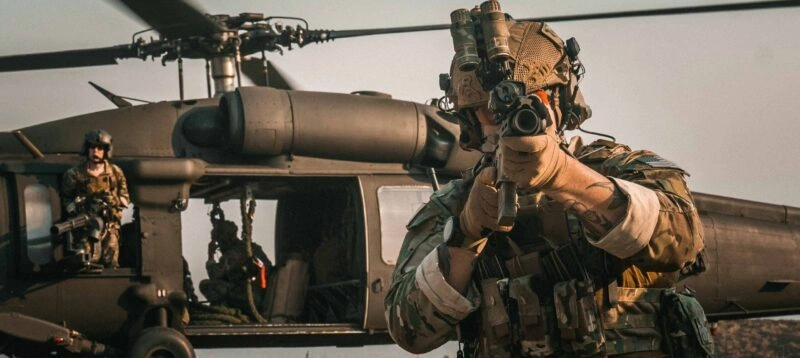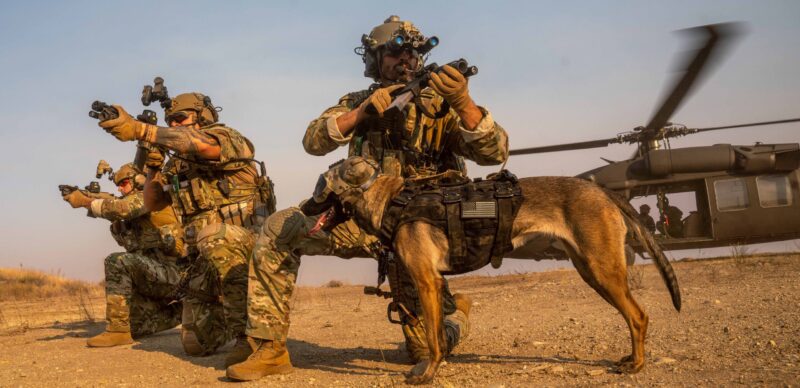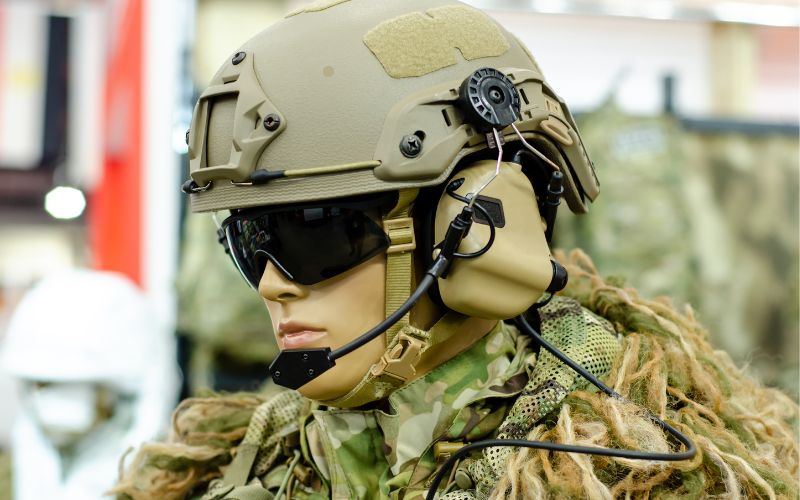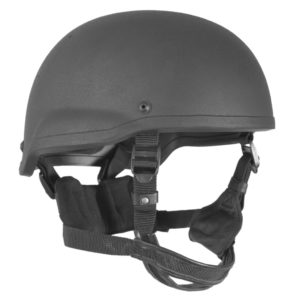Top Accessories to Upgrade Your Ballistic Helmet Setup

Ballistic helmets are a cornerstone of personal protective equipment for military personnel, law enforcement, private security, and prepared citizens. In some designs, ballistic helmets protect the head against blunt impacts, shrapnel, and small-caliber rounds. A helmet’s potential can only be fully realized when it is optimized with mission-ready equipment that enhances both protection and performance.
Today’s tactical environments demand more than head protection—they require situational awareness, integrated communication, night operations readiness, and comfort during prolonged use. Whether you’re gearing up for a high-stakes mission or enhancing your setup for training or emergency preparedness, understanding what to add—and why—is critical.
Understanding the Role of Accessories in a Ballistic Helmet Setup
Contemporary helmet accessories are not merely convenient—they double the functionality of the equipment you already wear. An accessorized helmet fills the gap between passive defense and active battlefield capability.
While the helmet shell offers core protection, the accessories turn it into a tactical solution. These additions, ranging from night vision capability and communication devices to counterweight balancing systems and eye protection, are designed to enhance your helmet for practical use.
A modular helmet system offers a customized solution for various settings, including urban, desert, woodland, maritime, and domestic law enforcement operations. The proper configuration reduces fatigue, enhances agility, and enhances mission effectiveness. Get mission-ready with the Level IIIA Mid-Cut Helmet from Chase Tactical.
Essential Helmet Accessories for Ballistic Protection
To construct a helmet system that provides protection and performance, you must prioritize accessories that maximize functionality, comfort, and mission flexibility. The main categories and components constitute a fully upgraded ballistic helmet system.
1. Helmet Covers
Helmet covers are usually the initial accessory mounted on a tactical helmet. They have more than cosmetic uses. A properly fitted cover guards the helmet surface against natural weathering and UV rays while providing camouflage advantages. Most contemporary covers are made from abrasion-resistant materials, such as Cordura, and feature Velcro panels for patch mounting, IR markers, and signal strobes.
The right cover provides clear access to rail attachments and NVG mounts, keeping loose wires secured and avoiding snag hazards in heavy terrain.
2. Night Vision Shrouds and Mounts
Night vision equipment (NVDs) is crucial for missions in low-light or no-light situations. To mount them securely, your helmet should have a front shroud, typically polymer or metal, that can accept NVG arms or brackets.
Mounts enable one to adjust the position of night vision goggles up or down and fine-tune the fit for optimal stability. If NVDs are not mounted securely, they are difficult to stabilize, which decreases their efficiency and can even damage them from impacts.
An adjustable, rugged mount is not an option for someone who depends on NVGs regularly.
3. Helmet Rail Systems
Helmet rails enhance the functionality of your helmet by providing mounting points for peripheral accessories. The rails, often constructed into the side of high-cut or mid-cut helmets, support modular gear like:
- Tactical lights
- Cameras
- Oxygen masks
- Ear protection systems
One of the most useful functions of a rail system is cable management. Good routing and clips prevent messy cords from impeding movement or sight.
4. Counterweights and Battery Packs

Latching front-mounted devices, such as NVGs, forward tilts the helmet, leading to neck straining and loss of balance. Counterweights, typically attached at the back, help distribute weight evenly.
Some configurations integrate counterweight capabilities with battery storage to power NVGs, lights, or communication equipment while maintaining helmet balance. These are generally Velcro or MOLLE-style strap attachments and are low-profile so as not to catch other accessories.
A balanced helmet enhances stamina and diminishes fatigue, particularly on long missions or patrols.
5. Retention Systems and Chin Straps
The retention system is one of the most overlooked parts of helmet function. A snug, comfortable chin strap keeps your helmet securely in place during dynamic motion or when carrying additional gear.
Advanced retention systems include padded chin cups, four-point harnesses, and release buckles. These enhance comfort and ease of donning and doffing, allowing for quick donning and doffing during emergencies.
Retention upgrades are especially necessary for heavy NVG configurations worn by users or in harsh environments.
6. Internal Padding and Comfort Liners

Stock cushioning systems that come with most tactical helmets tend to be sparse. Upgrading to a new pad system will make a significant difference in comfort, particularly during extended periods of wear.
Check for pads that provide:
- Memory foam or gel for personal fit
- Breathable components to evaporate sweat
- Modular construction for tailored fine-tuning
Comfort is not a luxury, but it improves concentration and mobility on the ground.
7. Identification and Signal Systems
Helmet-mounted strobes and IR beacons improve visibility and recognition. They are especially effective on joint force missions or at night when visibility to friendly forces is essential but not to the enemy.
IR strobes may be detected only by night vision equipment, thereby maintaining tactical stealth while ensuring safety during movement and coordination. Some models offer multi-function signaling, such as flashing and steady.
8. Communication Headsets and Hearing Protection

Good communication in high-stress situations can be a matter of life and death. Having communication headsets integrated into your helmet configuration is the number-one priority. Active hearing protection with ambient sound amplification enhances situational awareness while protecting your ears from damage.
New headsets will mount either directly to helmet rails or utilize under-helmet mounts. They typically feature boom mics that link to tactical radios for hands-free talking.
Integrated communications systems are crucial for coordination and safety in teams operating in noisy, dynamic environments.
9. Goggles and Eye Protection
Technically, goggles are not mounted on the helmet, so they are required to provide full-spectrum protection for the head. Tactical goggles must be ballistic-rated and designed to fit snugly over the helmet’s rim without creating pressure points.
High-quality choices won’t fog, protect against UV, and are impact-resistant. They are compatible with helmet rails or retention Velcro bands, maintaining a secure fit while in motion.
10. Helmet Storage and Protection
Your equipment is only as good as its condition. A padded helmet case keeps your investment safe in transit and storage. These bags include NVG compartments, cable storage, batteries, and other accessories.
Employing a helmet bag not only keeps your equipment tidy but also prolongs the life of your setup by protecting it from moisture, dust, and impact.
Final Thoughts
The contrast between a standard helmet and a completely optimized protection platform is in the accessories. Every upgrade—from internal pads to external mounts—has a specific purpose that boosts mission capability, comfort, and survivability. Whether you’re a tactical team member working in law enforcement or a civilian preparing for unpredictable situations, creating the proper helmet configuration is more than just about looks—it’s about being ready.
Begin by creating your mission profile, evaluating the conditions you’ll encounter, and then configure your loadout accordingly. Remember, each accessory must have a purpose. When all components work together—balanced, streamlined, and mission-oriented—you’ll have a setup that not only guards your head but also maximizes your overall performance.
Frequently Asked Questions
Is it possible to use helmet accessories on a bump (non-ballistic) helmet?
Yes, Most bump helmets are compatible with most accessories, including NVG mounts, covers, and rail systems. These helmets are a suitable choice for training or operations where impact protection is required but ballistic threats are minimal.
How do I know which accessories are compatible with my helmet?
Check the manufacturer’s specs for your helmet model. Most high-cut and mid-cut helmets utilize standardized shrouds and rail systems; however, it’s always best to verify compatibility before purchasing accessories

